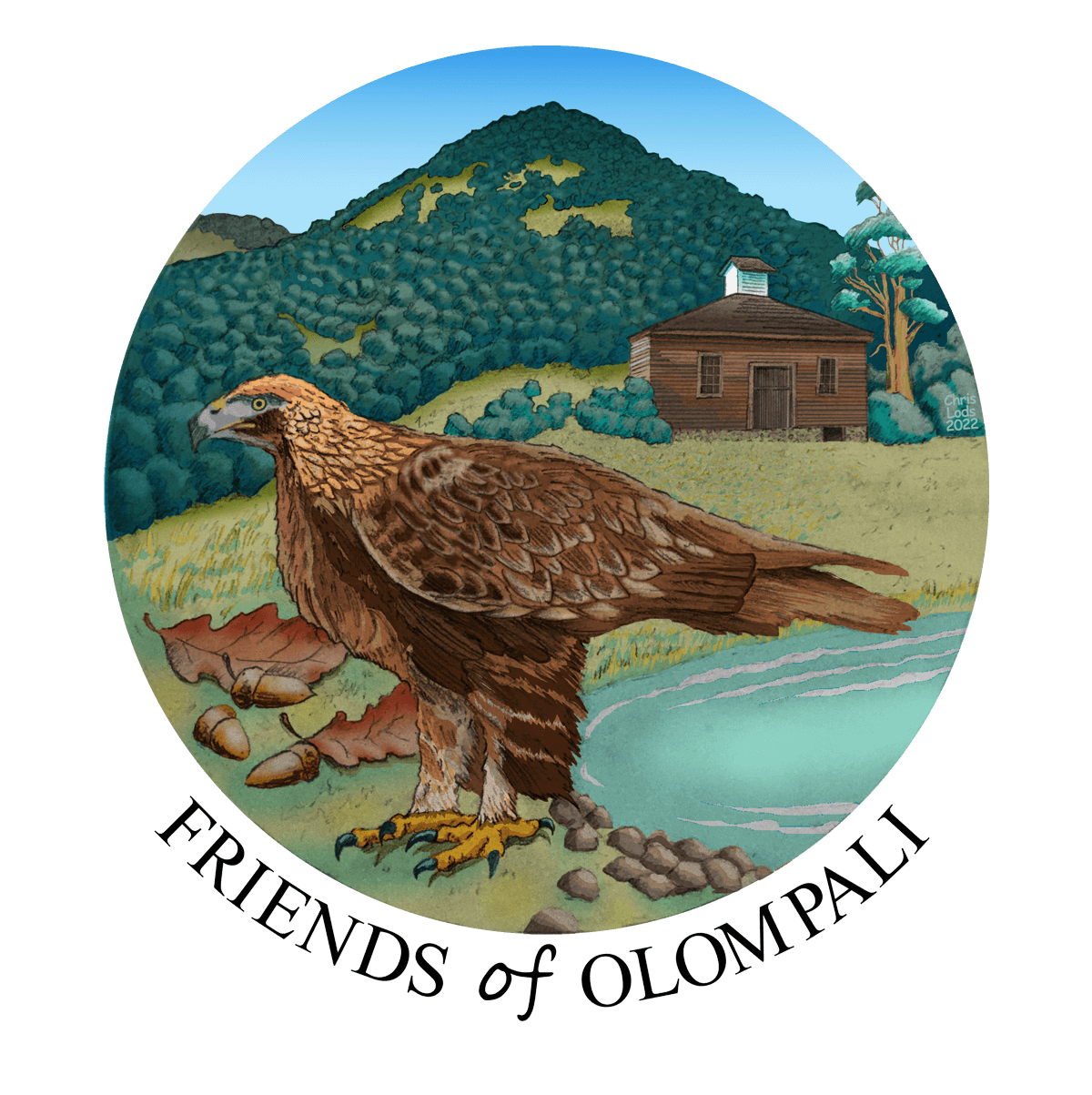A Pristine but Rich Landscape
Download your own PDF Guide of Olompali Plant Life
Four scientific Latin names are new and have been updated by Doreen Smith of the Marin Native Plant Society, 2021
Most of the plant communities within Olompali State Historic Park can still be considered relatively pristine in comparison to those of the rest of the state. However, if a pristine landscape is defined as an uncorrupted pre-contact natural environment, then the absence of the original inhabitants for the last 150 years makes Olompali less than uncorrupted.
Why? Because the Native American people, who lived at Olompali for some 8,000 years, had a significant impact and were active participants in maintaining a pristine land. The park has a tremendous ethno botanical significance because of the abundance of vegetation that was used in traditional Native American life.
Friends of Olompali are in the midst of putting in a Native Plant Nursery that will compliment the park's Reconstructed Miwok Village. The nursery will not only be planted within the village but it will extend outside the village as well. All important native plants will be identified, signed and interpreted, either in planting beds or within their natural growing areas.
The natural environment the park presents is a cultural environment as well. The California Coast Miwok people used plants for much, much more than food.
Plants were important sources of materials for construction of houses and boats, for tools and weapons, for basketry, containers and traps; for rope, thread and nets; for screens, mats, and brushes; for clothing and regalia; for firewood, firesticks, coals, and charcoal; to poison fish; for deodorant, soap and cleansers; for adhesives and abrasives; for diapers; for pigments and stains.
Plants were important sources of medicine for colds, fever, coughs, bronchial ailments; for blood, stomach, internal ailments, and cathartic; for rheumatism; for menstruation and abortion; for headaches; for poultices to wash cuts, to ease swelling, sores, and boils; for eye medication; for antidotes for poisoning and as an emetic.
Plants were also used in the Coast Miwok ritual and spiritual life for the curing of implements, to make musical instruments and effigies; for sacred ceremonial charms; for luck in gambling and love; for puberty, birth and women's rituals; for hunting and fishing; for first fruit gatherings; for games, songs and mythology.
In 1995 Brenda Raye Beckwith wrote her Master of Science Thesis in Biological Sciences detailing Coast Miwok plant uses, with an emphasis on Olompali State Historic Park. Her thesis is a wonderful resource. It compiles a history of the Coast Miwok of Marin and Sonoma Counties; describes the ethno botany of the Coast Miwok; and estimates the distribution and relative abundance of native, non-native, and culturally significant plants at Olompali.
A closer look at Boon Pang's wonderful painting....




